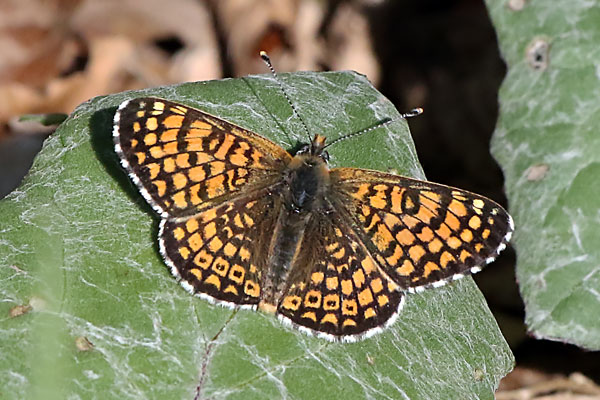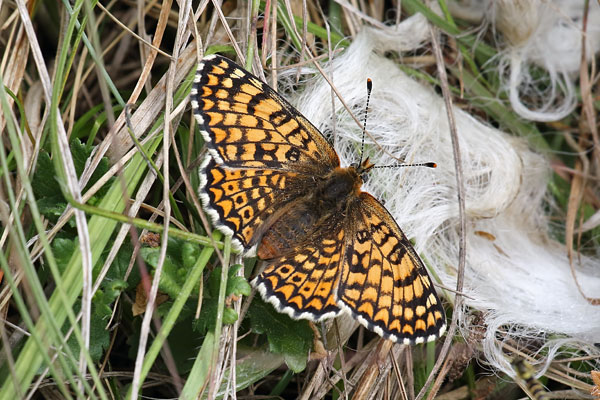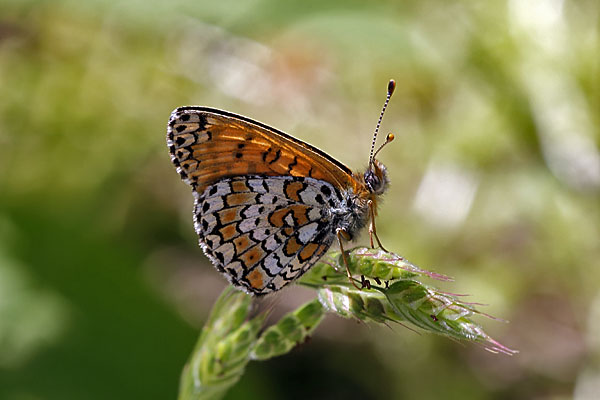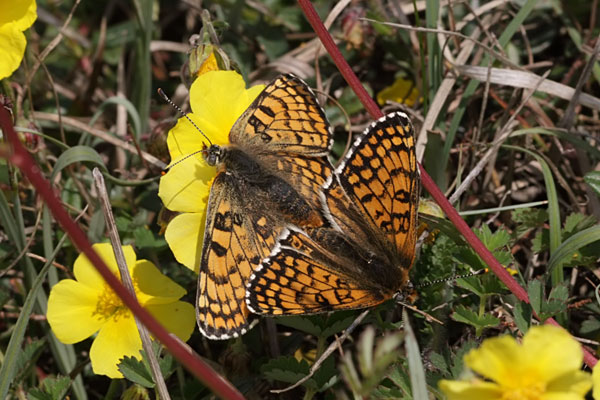Glanville Fritillary (Melitaea cinxia) | Species | ||||||||||||||||||||||||||||||||||||||||||||||||||||
 Male. Taken at Velebits NP, Croatia, on June 11th 2017. (1/5000th sec at f11. © David Hastings)  Female. Taken at Bjelopolje, Croatia, on June 7th 2017. (1/500th sec at f14. © David Hastings)  Female underside. Taken at Trigrad Gorge, Bulgaria, on June 23rd 2014. (1/200th sec at f13. © David Hastings)  Mating pair. Taken at Afton Down, IoW, on May 29th 2012. (1/320th sec at f14. © David Hastings) DescriptionFamily: Heliconiinae Wing span: 39 - 49mm The Glanville Fritillary is named after Eleanor Glanville, a 17th century lepidopterist who discovered it in Lincolnshire. In Britain it is found almost exclusively on the south coast of the Isle of Wight, although there are two sites known on the mainland. It is widely found in western and central Europe, and southern Scandinavia. This butterfly lives on undercliffs and the steep eroding slopes of coastal river valleys (chines). These slopes are warm and have a regular supply of the plantains on which the larvae feed. The flight period is from mid-May to the end of June. In good years there may be a partial second generation in August. The larva is the overwintering stage. The primary larval footplant is Ribwort Plaintain (Plantago lanceolata). Adults often take nectar from Knapweeds, Thrift and Birds-foot Trefoil. Adults have a rapid flight, interspersed with gliding. Females are fairly mobile and have been found several miles from their breeding site. Endangered Sightings
| |||||||||||||||||||||||||||||||||||||||||||||||||||||
